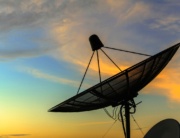Home / Handy Tips /

Feeling a little overwhelmed by the sheer quantity of NBN (National Broadband Network) technologies available on the market? Don’t worry – you’re not alone.
NBN technology is always changing, and news articles, the government, and internet service providers don’t exactly make it easy to understand. In this guide, we’ll explain – in plain English – the NBN technologies currently available.
Let’s get right into it.
Fibre to the node (FTTN)
Fibre to the node (FTTN) is considered one of the cheapest, fastest types of NBN technology. Here’s how it works:
- A node is installed at the end of a street, or in a centralised mid-point that can be reached by a number of smaller streets.
- That node is connected to the nearest fibre distribution hub.
- Each house is connected to the node via existing copper phone lines.
Because FTTN utilises existing copper phone lines, it is generally less-expensive and quicker to roll out. That being said, the use of old-fashioned phone lines limits the maximum download and upload speeds.
FTTN has the capacity to be upgraded in the future. Copper lines could, eventually, be replaced with optical fibre.
Fibre to the premises (FTTP)
Fibre to the premises is considered the very best NBN connection. Also referred to as fibre to the home (FTTH), FTTP works like this:
- A fibre optic cable runs from the nearest fibre distribution hub to every single premise.
- A dedicated multi-fibre ribbon cable connects to each house directly.
FTTP offers the fastest connection, the lowest latency (i.e. ‘lag’), and the highest potential for upload and download speeds.
FTTP isn’t available everywhere, but you can apply for something called Individual Premises Switch. A word of warning: this upgrade is expensive. If you manage to convince a few more residents in your area to make the switch too, the cost per user will come down a little.
Fibre to the basement (FTTB)
Live in an apartment? Your default NBN connection will be fibre to the basement (FTTB). This technology is quick to install, affordable, and effective. It works like this:
- A full-fat fibre pipe connects directly to your building’s telecommunication infrastructure.
- From there, the NBN is distributed to individual apartments via the existing cable network technology.
Older apartment buildings with out-dated copper wiring may experience slower speeds. But, most newer building use Ethernet network cabling, delivering speeds close to what you might expect from a FTTP connection.
Fibre to the driveway (FTTDP or FTTC or FTTD)
Fibre to the driveway or fibre to the distribution point or fibre to the curb sits somewhere between FTTP and FTTN in terms of speed and costs. Here’s the way it works:
- Similar to FTTP, a fibre optic cable runs from the nearest fibre distribution down the street.
- This cable connects then connects to the copper wiring that runs from a house into the street (the distribution point).
- Then, the connection runs from the copper wiring into the premises.
While this sounds similar to FTTN, FTTD is generally faster and more reliable. Instead of the last kilometre, just the last few metres utilise existing copper wiring.
Hybrid Fibre-Coaxial (HFC)
Sorry to say, this is the oldest, least effective NBN technology in our guide. In fact, the HFC technology was used to connect homes to Foxtel back in the day.
The good news is, the majority of Optus’s and Telstra’s HFC customers are being upgraded to FTTD or FFTN.
If you are able to upgrade – don’t hesitate. While your HFC download speed may be acceptable during downtime, when peak time rolls around, your speeds will drop dramatically. What’s more, your upload speed will almost always be excruciatingly slow.
Fixed wireless
Fixed wireless technology is used to connect rural and regional areas to the NBN. An alternative to satellite (see below), fixed wireless uses ground-based hubs that communicate to premises wirelessly.
Fixed wireless uses the same technology as the 4G networks from major telecommunications companies.
Satellite or Sky Muster
The long-distance connection of satellite NBN mean that speed and latency is, compared to the technologies listed above, the worst of the group. That considered, areas previously accessing the internet via flaky mobile connectivity will notice a huge improvement.
Switching to satellite is quite expensive and time consuming. It requires a new satellite – obviously – plus a range of hardware upgrades at the user’s premises.
Need help with your NBN upgrade?
There’s no doubt about it – NBN technologies are complicated. If you would like professional advice on upgrading your internet connection to the NBN, get in contact. Our team can laisse with ISPs to help you secure the best possible speeds for the lowest prices. Call today on 1300 553 166, or fill out the form on this page, and we’ll get right back to you.








Leave A Comment